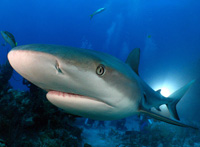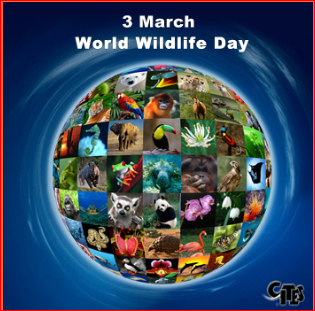World Wildlife Day message from IUCN Director General
IUCN is delighted to join in the global celebrations of the inaugural World Wildlife Day on 3 March, declared by the United Nations General Assembly, says the Union's Director General, Julia Marton-Lefèvre.
World Wildlife Day gives us a chance to highlight the breathtaking diversity of our planet’s animal and plant species and how their continued survival in the wild is intimately linked to ours.
IUCN, with its deep connection to CITES, has been working on conservation and sustainable use of wildlife for over 60 years, in particular through the 8,500 members of the IUCN Species Survival Commission — bringing the top species conservation expertise to support CITES, IUCN and the conservation community worldwide.
In this 50th anniversary year of the IUCN Red List of Threatened Species, we are cognizant of the ever-growing pressures on the world’s wildlife: 21,286 out of 71,576 species assessed on the IUCN Red List are today threatened with extinction, including one in four mammals, two in five amphibians, one in three corals and one in eight birds.
We know that conservation works. Thanks to targeted action, backed by political will, we have slowed down the current rate of species extinctions by one-fifth. And yet the speed at which species are disappearing is alarmingly fast: up to 1,000 times higher than the natural ‘background’ rate calculated from fossil records.
Species extinction is not just an environmental concern — it has profound implications for our economies and societies. We sometimes forget that we, as individuals, customers and businesses, rely on wildlife to provide us with the food, fuel, medicine and other essentials we simply cannot live without. And then there is something deeply comforting in knowing that we share our planet with millions of other species which form an amazing web of life.
This is why we must join forces, more than ever before, to address major threats to wildlife — from habitat destruction to illegal trade and from invasive species to climate change. SOS—Save Our Species, a global coalition to conserve threatened species and their habitats led by IUCN and partners, including CITES, is one concrete response to this challenge.
But we need to do much more, and much faster, to turn the tide of extinction and to fulfill the pledge made by nearly 200 governments to prevent known threatened species from going extinct by the year 2020.
On this first-ever World Wildlife Day, IUCN stands together with CITES and the international community in calling the world’s attention to the urgent need to secure the survival of fauna and flora species in the wild.
I hope that all of us will answer this call — for wildlife, for people and for our planet.






